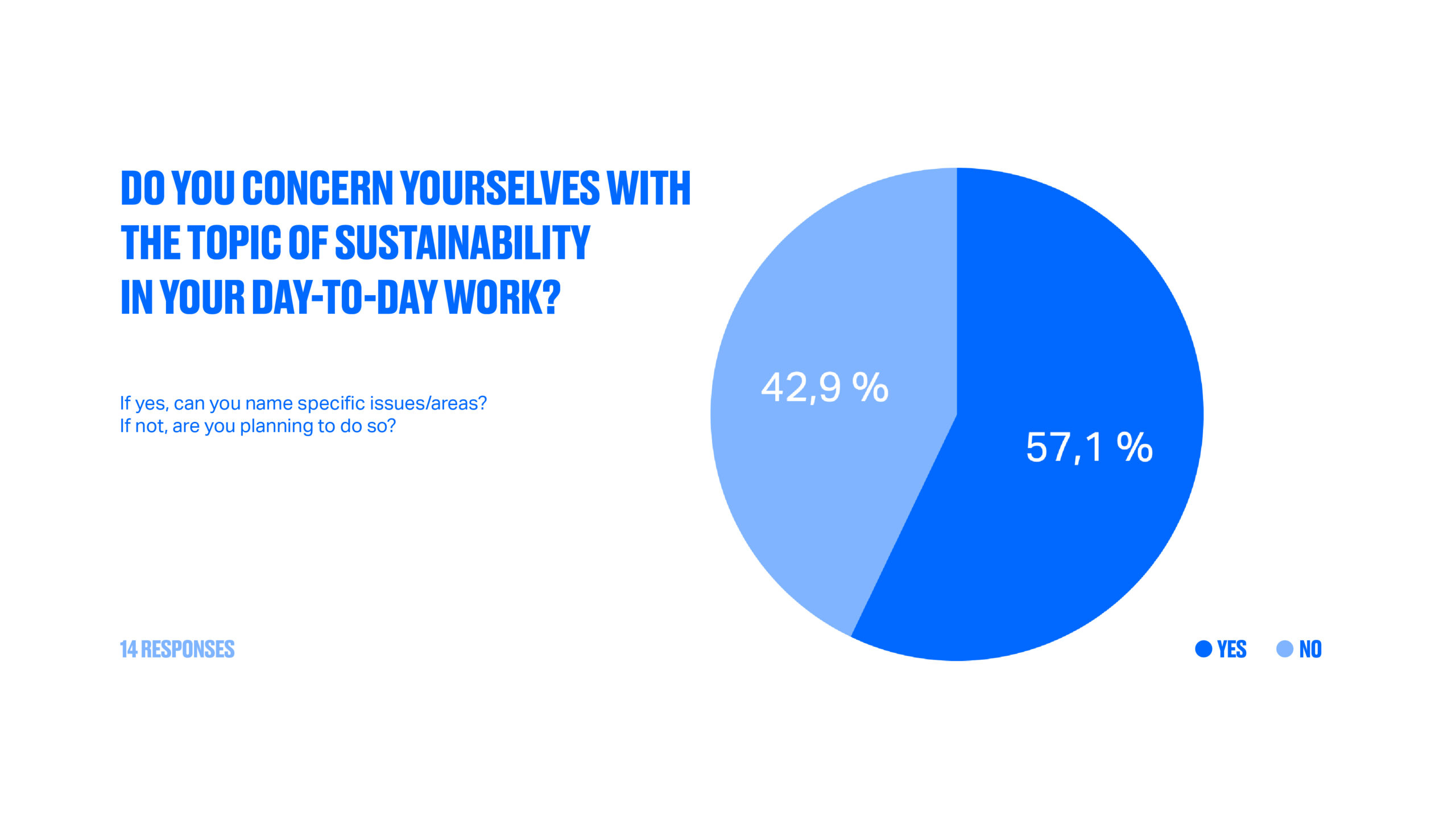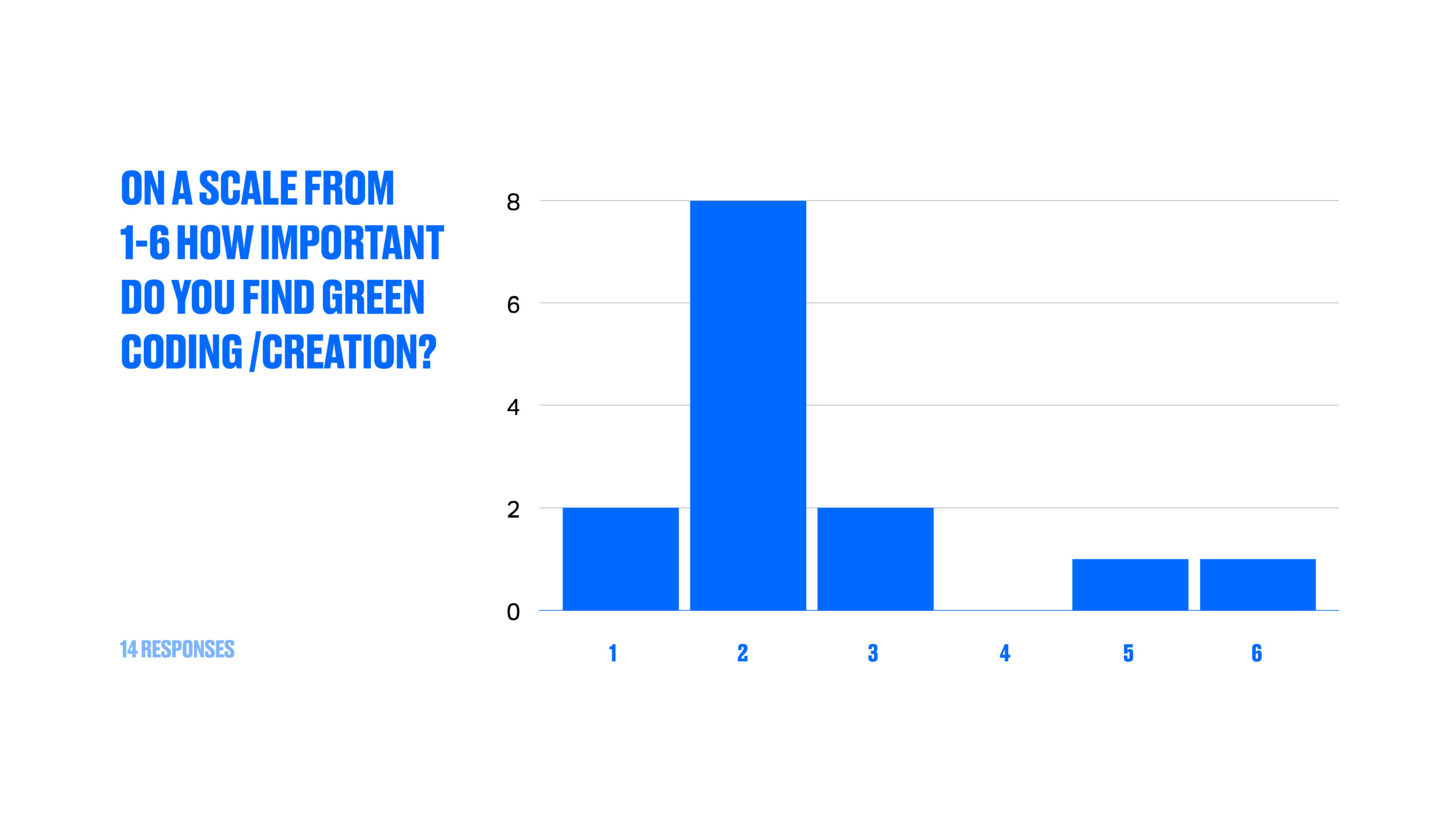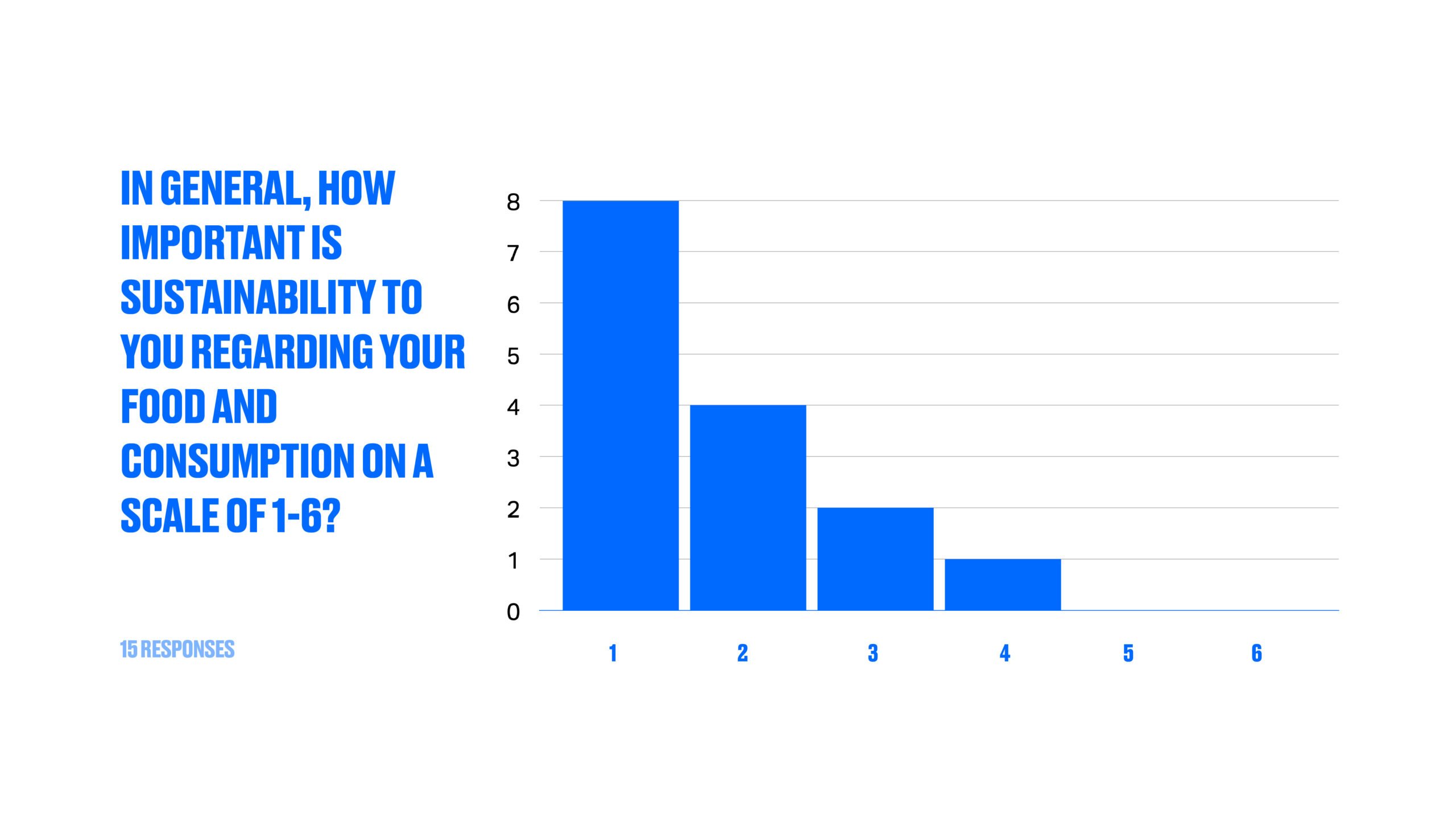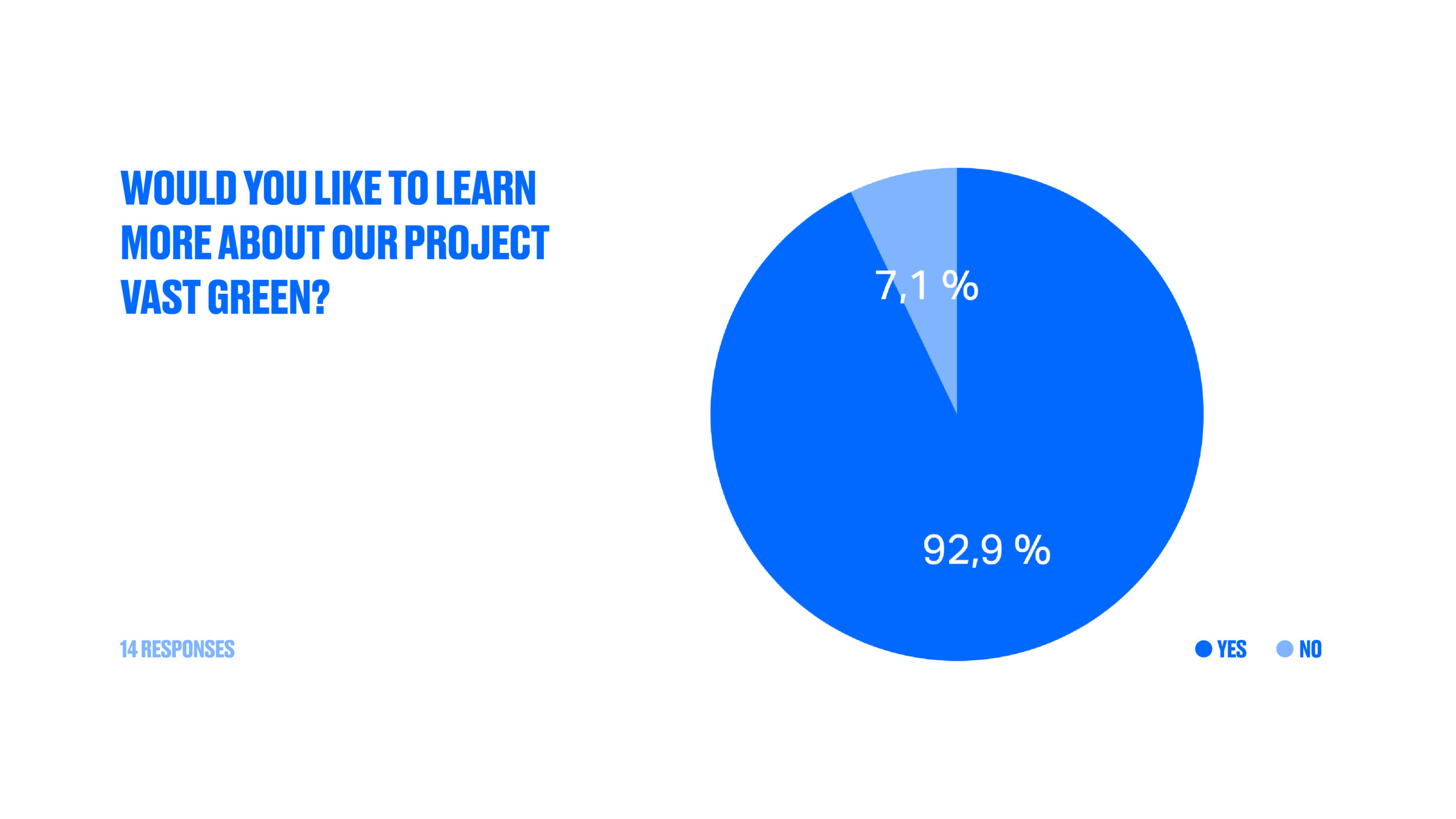Short report based on the network survey as part of the VAST GREEN initiative
- Conducted: February 2022
- Method: Google survey via phone and chat, responses transcribed
- Number of respondents: 15
- Number of questions: 35
- Target group/relationship: partners and suppliers (close network)
Background
In 2019, VAST FORWARD began to take an intensive look at the sustainability of its own value chain. In 2020, this has led to the internal project VAST GREEN, which is being driven forward collaboratively by the VAST FORWARD core team.
As an SME, our path to a more sustainable digital economy means taking steps that are currently only required of much larger companies by law (for example, the CSRD reporting standard which obliges companies > 500 employees to include sustainability into their yearly reportings).
In addition to our internal processes and dependencies, understanding our network and supply chains is also essential in order to achieve real change, making this the most important motivation for this first network survey.
Aim of the survey
The most important goal of the network survey was to gain an initial insight into how our network positions itself regarding the topic of sustainability. For this purpose, we created a survey which was tested internally at first. The questions for the survey are based on VAST FORWARD’s own supply chain analysis.
As a digital network agency, we primarily work with diverse partners from creation and programming, who are organized in very different organizational structures – from independent freelancer’s to (small) agencies. It was exciting to see that there is generally a great interest in the topics of “Green IT” and “Green Coding” among all respondents.
This report “Green Tech/IT & Coding” summarizes the most interesting questions, results and findings from the network surveys.
Highlights from the survey
- Clean and slim data packages
- Files are set up to be both reusable and available to everyone (open source approach)
- Customers are selected according to the criteria of “sustainability”
We asked our network if they had ever calculated their Co2 footprint. 64.3% answered with no and 35.7% answered with yes.
The majority of those who answered with no, asked for a recommendation for a CO2 calculator during the survey.
Green IT and Green Coding
The following three questions refer to the interest, the importance as well as the implementation on the topics “Green IT” and “Green Coding”. It should be mentioned here that there is currently no standard definition for these topics or even policies and standards that can be easily followed in digital projects. Nevertheless, the idea of more sustainable digital projects is present in most of the entrepreneurs minds within the VAST FORWARD network.
11 out of 13 respondents answered with “important” and “very important” on a scale from 1-6 (1 meaning very important and 6 not important).
How would you define the term "Green IT"?
The understanding of the term “Green IT” is multifaceted and a general standard does not yet exist.
Excerpt from the answers.
- Green IT = Green Design
codes, files, applications are built in a way that they can be used as efficiently as possible - everything that happens during the process that generates electricity in a green way
Server will generate from green power
home office
code efficiency - Reduce data volume and transfer and/or conscious handling, energy-conscious handling of IT, climate-neutral service providers (hosting, cloud services, up to electricity providers)
What do you understand by the term Green Coding?
- Scripts running efficiently, no loops, no outdated technologies
Balance between the amount and quality of information and a fancy layout - Subconsciously already doing all of this, but still didn’t deal with the term or know that it was
- A resource-efficient code for optimal visibility and usability of the applications / software / site. That’s in my own words, but there’s a lot more to it that I’m very interested in and enjoy learning with Vast Green.
- Efficient and performant programming (relieves hardware and energy consumption), keeping code small and structured, scalable/buildable programming to not have to completely replace existing systems for new components.
Data exchange and storage
As a 100% remote structured network agency and digital service provider, data exchange, data security and data storage are a daily challenge. Relevant sustainability issues range from choices in technical (cloud) infrastructures to file sizes for creation. We asked some questions about the topic, including: How do you manage your data? Do you pay attention to file sizes before you send them? Where do you store your data? Do you pay attention to the sustainability of your server or cloud provider?
In response to the question “Do you check file sizes before you send them?”, almost all respondents replied with yes. There were also a lot of responses on the topic of data storage. Some of the respondents store their data on external hard drives to avoid cloud use and to consciously act more sustainable.
28.6% of respondents answered yes to the question of whether they follow a data hygiene policy within their company. The majority of our respondents are entrepreneurs and self-employed and do not require a data hygiene policy, but act with basic measures in favor of sustainability and productivity.
Here are some selected responses:
“Very simple guidelines: everything is cleaned up and updated once a year. Everything is archived on a hard drive that is locked in a cabinet.”
“Don’t have any requirements, but clean up on a regular basis”
“There are regular cleanups where unimportant emails, files (local & cloud) are deleted.”
Open Source
When it comes to the software used, an open source approach can support sustainable business: open systems that are permanently developed further by a large developer base are generally more resource-efficient.
Here are some of the answers:
“No, because of intellectual property. You have to distinguish where the claim of his own work is. He doesn’t want to share his approaches and intellectual property with others because that’s how he sells himself. BUT that doesn’t mean he won’t share with creatives or collaborate on projects.”
“At the moment, no. But would do in principle, if the OK from the customer is there. eg many templates I create are custom, but can theoretically be used for other projects. Either as an example or without data.”
“Open source I use in any case. But I wouldn’t disclose the codes of the projects, because the rights are transferred to Vast Forward and the end customer.”
In response to the questions “What open source software do you personally use?” the following examples were shared:
- Open Office, GIMP, Source Forge, Mail is Opens source,
- WordPress (mentioned several times), Git, Thunderbird, FireFox, etc.
- codeigniter, databases, …
- Firefox, VLC Player
- Visual Studio Code (mentioned several times)
- Libre Office,
- Linux (mentioned several times)
- Atom,
- TYPO3
- Blender
Circular economy, recycling and Vast Circle
Corporate sustainability cannot be sufficiently explored without considering the area of hardware and devices, for which we have also asked relevant questions. At VAST FORWARD, current devices (computers, tablets, smartphones) are important tools in our everyday business; they enable us to work together efficiently over a distance. We rely on functional hardware that offers us reliability in our day-to-day work and ideally runs without technical support. In our decentralized team, this is hardly feasible without regular updates and upgrades of the devices.
Old devices, such as computers and telephones, are taken out of the inventory after many years of use and are then passed on to family or friends for private use. We asked our network what their company does with old devices.
Selected responses to the question “What does your company do with old devices like computers and phones?”:
“Used to donate computers to social projects now uses them until they die then gives to Free Your Stuff to hobbyists”
“Donations to younger generations (school)”
“Some go to family. Or to a store that formats it and resells second hand. A few electronics are still in a box waiting to be disposed of.”
Sustainable service providers
Services from mobile providers, electricity providers, banks, etc. are also important to consider when looking at our own supply chains. We have therefore also asked our network whether they are already taking a closer look in this regard.
Sustainability as a private person
Based on our own experience within the VAST FORWARD team, sustainability in our private lives is a first step towards making our everyday work more sustainable as well. We do not work together in an office where we can make central decisions for the whole team. Each employee is responsible for his or her own working area and the decisions that follow.
We were curious to see what we can learn from our network and how important sustainability already is in the network’s personal environment.
The split between the use of public transport, bicycle use and car use is very interesting. We want to follow up in the next survey to see if the graphic will change in terms of its distribution.
Also to the question “Do you consciously pay attention to regionality, organic food or do you follow a vegetarian or vegan diet?” most of our contacts replied with yes and gave some examples.
Since the VAST FORWARD team mostly follows a vegetarian or vegan diet, we hosted a Lunch & Learn on the topic in January 2022 and wrote a related blog post in the realm of this year’s Veganuary.
Closing Question on VAST GREEN
To conclude, we presented three of our current focus topics and asked if there was further interest in them: The responses to this question confirmed that we are well on our way with VAST GREEN, and that we have a network that shares our focus and is curious about our results and successes. In line with our motto “We do not just compensate”, we will work as a whole team to drive our VAST GREEN initiative forward and involve our network and all stakeholders even more in our sustainability transformation.
- Expansion and launch of Vast Circle
- Stakeholder analysis 2.0, sustainability of our customers
- Independent website for “Sustainable Friday”














